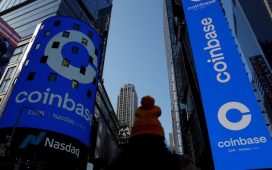Consumer prices in the eurozone increased by 2.6% year-on-year in May, according to Eurostat’s flash estimate, up from 2.4% in April and above economists’ expectations. It’s the first month-on-month acceleration of 2024. Core inflation, which shows prices without energy and food costs, also accelerated to 2.9% over a year earlier– the rate was 2.7% in April.
In May, the greatest contributors to eurozone inflation were services (4.1%, compared with 3.7% in April), followed by food, alcohol and tobacco (2.6%, down from 2.8% in April), non-energy industrial goods (0.8% vs 0.9% in April) and energy (0.3% vs -0.6% in April), according to Eurostat estimates.
Could Higher Inflation Derail ECB Rate-Cutting Plans?
“Higher than expected inflation in May will have some investors concerned, particularly as the rise was driven by services inflation, the one area that the ECB had previously expressed concern about. Although an uptick like this is disconcerting, particularly after sequential downward movements, we do not believe there is any cause for panic,” said Michael Field, European Market Strategist at Morningstar.
He said there are three things to bear in mind:
- “First, and most importantly, inflation was never going to see a perfectly straight line decline to the ECB’s targeted 2% rate. The ECB had previously forecasted inflation to fall to 2.3% by year end. At 2.6% now, with seven months to go in the year, there is plenty of time for inflation to fall further.
- Inflation rates in May differ massively across the Eurozone. In Belgium inflation is running close to 5%, while in Italy it’s less than 1%. This disparity just highlights that tight labour markets are country specific, and not an endemic trend across the entire block, so unlikely to drive inflation up much further as the year progresses.
- Core inflation, the measure the ECB is most focused on, rose by 20 basis points in May, but remains under 3%, almost half the level witnessed this time last year. There may be bumps ahead, but we’ve come a long way, and the trend is still downward.”
Eurozone bond yields rose slightly after the release of price data. Germany’s 10-year yield was up 0.048% at 2.7% (source: MarketWatch). Italian BTP yield was at 3.49% (source: Borsa Italiana). Stock markets were mixed as of noon.
Pace of ECB Rate Cuts Is More Uncertain After June
The European Central Bank (ECB) monetary policy meeting will take place on June 6, and the market expects a cut to interest rates.
“Another small fall in inflation in May would have been the icing on the interest-rate cut cake, but with more than 90% of economists polled expecting the ECB to cut rates in June, small upward moves in inflation, such as this, are highly unlikely to prevent this,” said Field.
However, the future path is less clear. “There is major uncertainty over the pace of disinflation,” UBS economists wrote in a May 28 note.
ECB President Christine Lagarde, said that ECB monetary policy will remain highly data dependent and that she is not committing to “a particular rate path”.
UBS economists expect 75bps of cuts this year and 100 bps in 2025: “According to our central scenario, ECB’s first cut in June will be followed by a long and gradual sequence of 25bps rate cuts per quarter (…) bringing the repo to 3.25 by the end of 2024 and to 2.25 by the end of 2025.”










